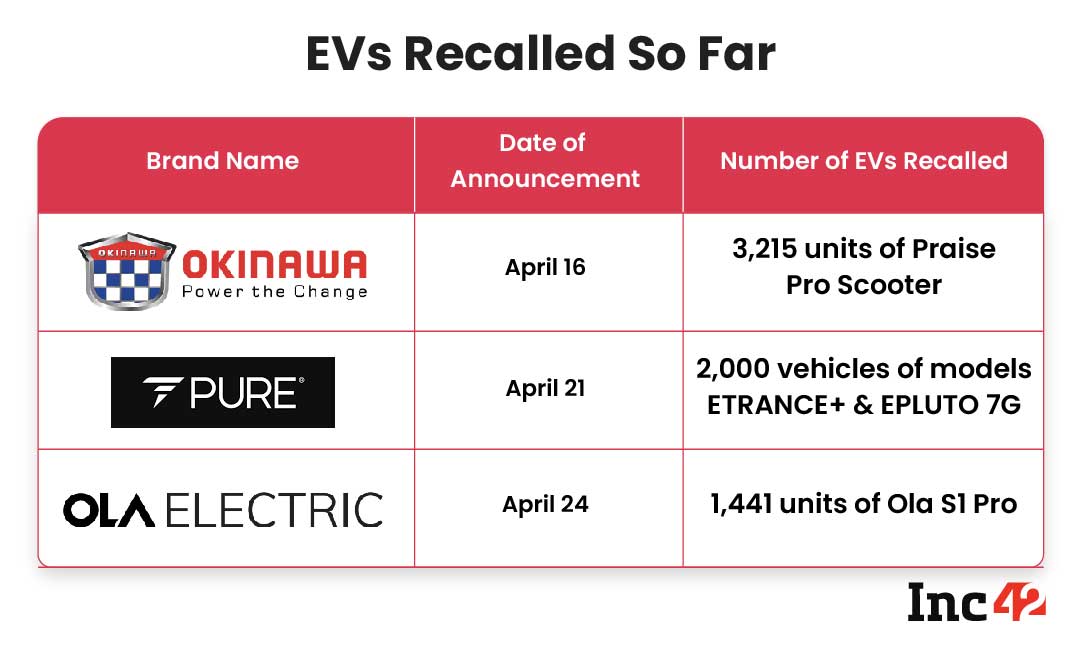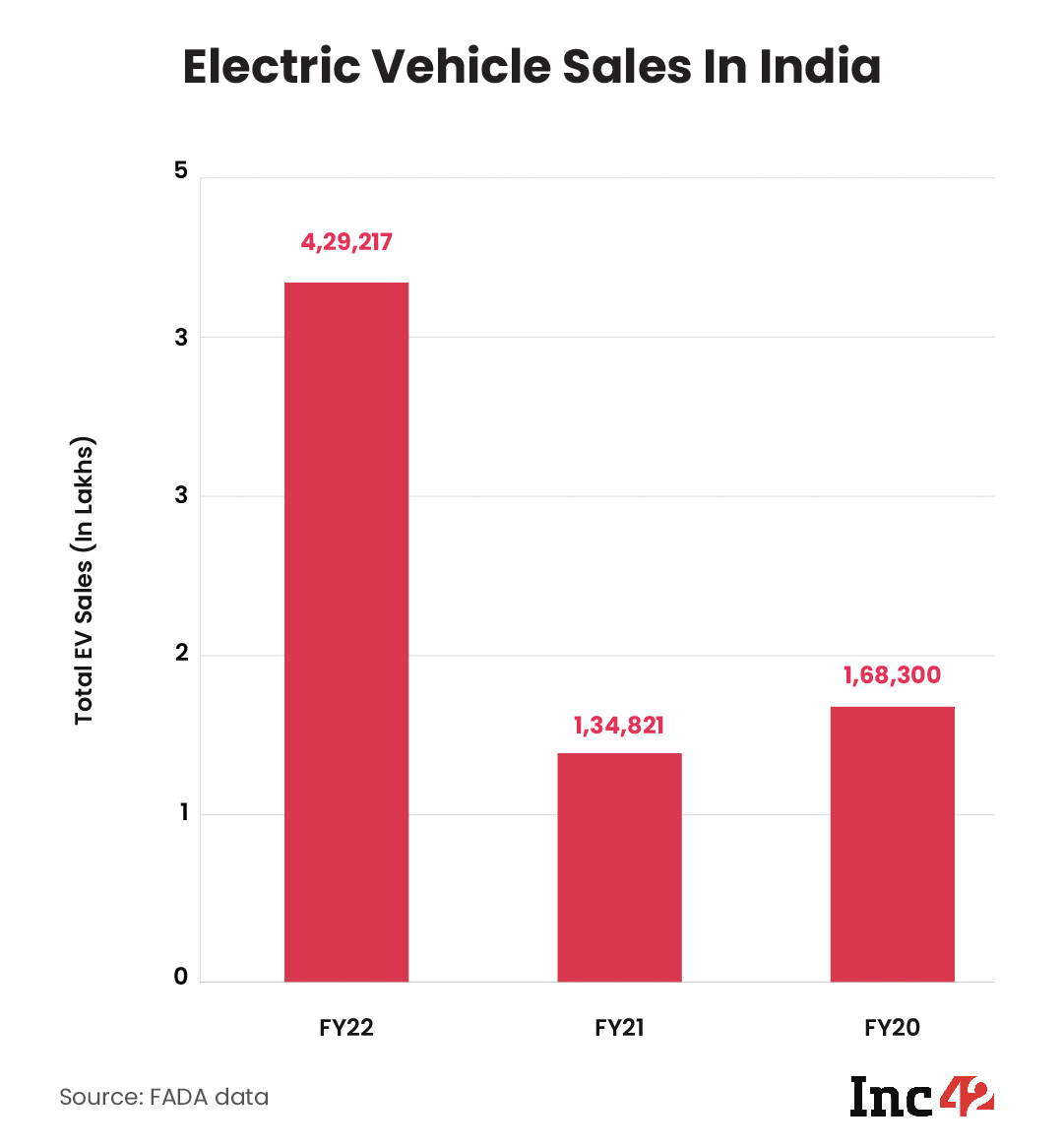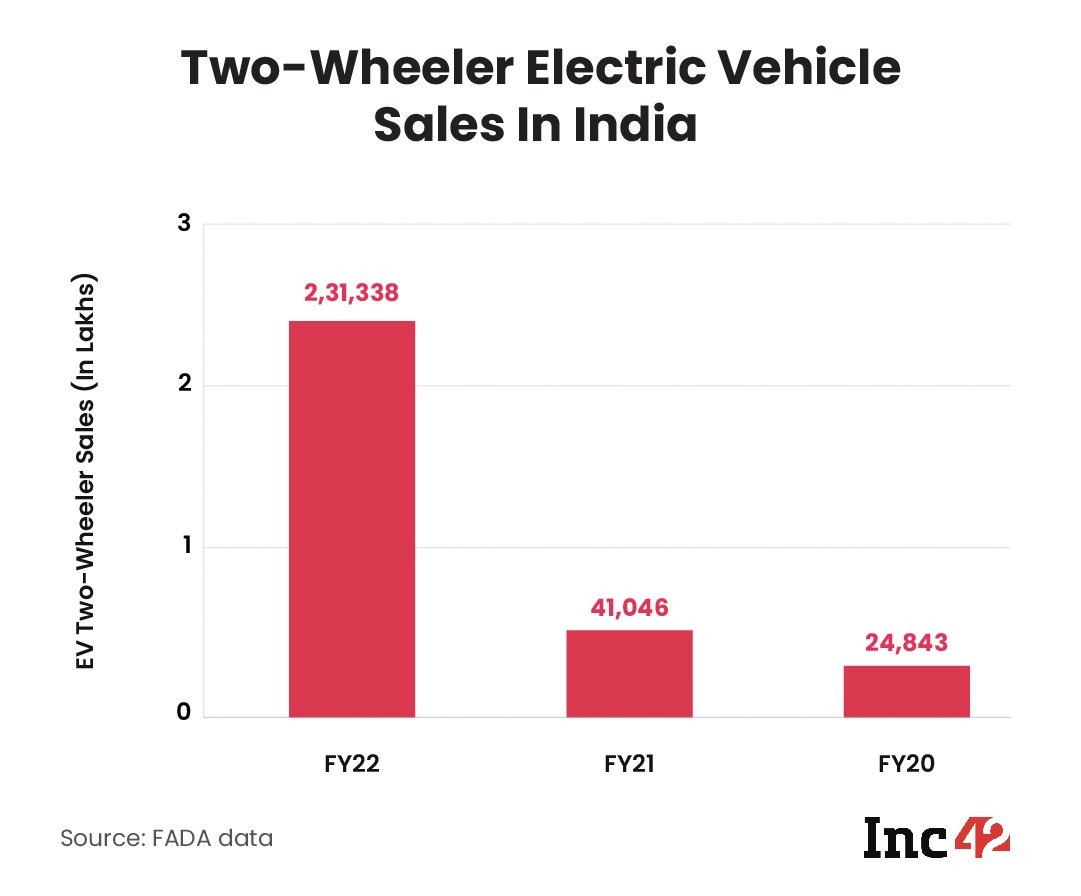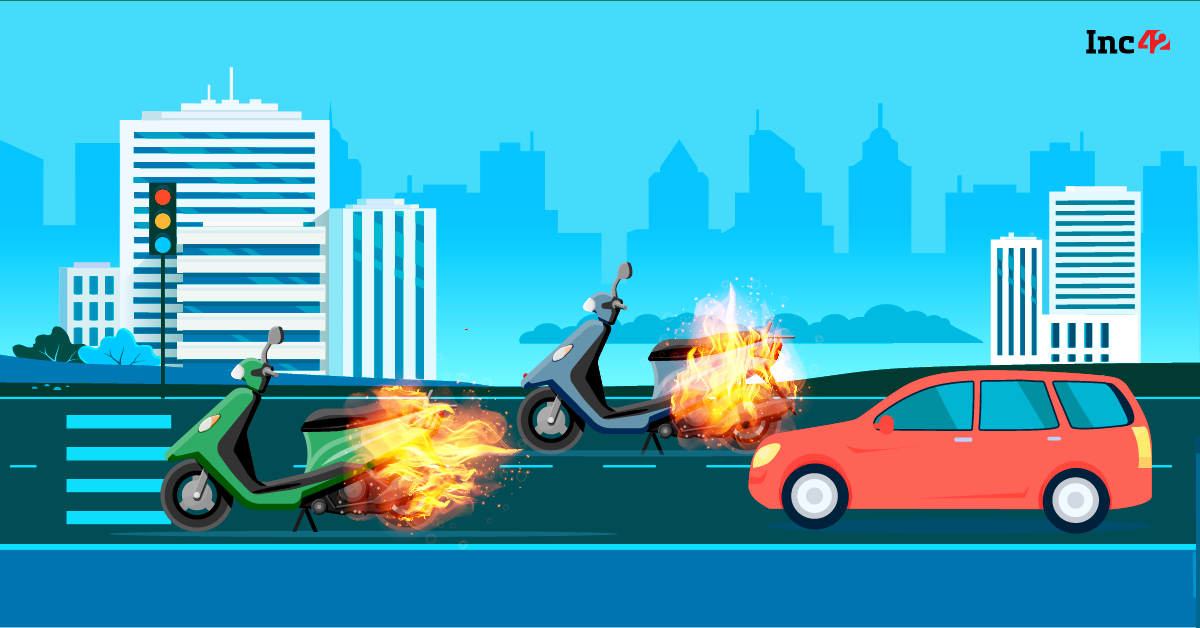While EV fire incidents are often attributed to high ambient temperature conditions in India along with poor battery quality and the nascent stage of the EV industry, there are nuances to these statements
The onus of importing the right cells that could function well in the Indian climatic conditions and testing them here is on the OEMs
While the government is making efforts in the right direction, there are still loopholes in the regulations for the nascent EV industry
EV scooters burning on Indian roads are no more rare incidents. In 2021 too a few escooters burnt but the beginning of 2022 has sent chills down the spine with people even dying on roads or at homes due to a sudden fire breaking out in their electric vehicles (EVs) or with EV batteries exploding.
In the last three months, EV two-wheelers manufactured by Okinawa Autotech, Pure EV, Ola Electric and Jitendra EV made frequent headlines for fire cases and by acting on it, about 7,000 vehicles have been recalled so far. Moreover, the government has also asked the EV players to halt any new model launch till the investigation is on. However, once seen as a shining industry, these fire incidents have put a question on the future of this segment, which is also the Indian government’s pet project.

Several EV dealerships Inc42 spoke with, cited the cause of fires as higher ambient temperature conditions in Chennai and Telangana, where such incidents have been more frequent. Many even said that these newly launched EVs need time to be up to the mark. But do these justify putting thousands of people’s lives at risk? Should citizens then conclude that EVs are not meant for the Indian climatic conditions?
However, that surely is not the case because only a few ebike manufacturers’ names are common in all these incidents and no such cases have been noticed in the three-wheeler and four-wheeler EV segments.
Moreover, there are several other players in the two-wheeler EV segment alone, including Ather Energy, Revolt, TVS Motor, Bajaj Auto who did not face any such allegations so far.
Some blame the fire incidents on the substandard quality of imported batteries being used in these vehicles, some say that even ICE vehicles burn and malfunction but currently, only EVs are gaining the prime media focus given it’s a newer technology in use.
However, several other leaders associated with the industry beg to differ on either of the points and believe there are nuances to these statements as well.
EV Two Wheeler Fire: Issue Lies In Lack Of R&D
According to Vinkesh Gulati, president of the Federation of Automobile Dealers Associations (FADA), the blame should be on the newly emerging EV companies that do not undertake the R&D process seriously before launching their vehicles.
Gulati said that the Indian roads and climate, usage of vehicles in the country and people’s psyche of loading vehicles are very different from other regions, and thus, Indians require vehicles that could cater to those needs.
However, he pointed out that since a chunk of existing EV companies import most of the equipment from foreign countries and just assemble them in India, their vehicles do not go through the rigorous R&D process that conventional vehicles do. Hence, under higher temperature conditions or during an uphill journey, the EV scooters often malfunction.
Ola Electric announced the launch of its escooter in August last year. It was finally out for sales in September 2021. In January this year, the startup was still struggling to deliver its escooters on time. During that time, CEO Bhavish Aggarwal said that all S1 customers will receive S1 Pro hardware with the possibility of unlocking it after paying a performance upgrade fee, instead of calling it a delay.
In fact, Ola Electric has been receiving criticism from industry stalwarts like Rajiv Bajaj and from other players in the industry for varied reasons.
Speaking along the similar lines as Gulati, Amitabh Saran, founder and CEO at Altigreen, a startup that manufactures commercial three-wheelers, said that it is the responsibility of the OEMs to check every component of the EVs, in-house, to ensure that the final product that goes out on the road is well-engineered.
Talking about importing the cells that go into making the EV battery packs, Saran said that the foreign countries manufacturing the EV cells are not there to ‘scam’ the OEMs. The cell manufacturers have different qualities of products and the OEMs have the responsibility to pick and choose the right ones.
“Each cell’s behaviour is different at different temperature conditions, voltages and currents. We just have to engineer it right,” added Saran.
However, he said that a large number of cells, as mentioned by their manufacturers, are best operational at 25 degrees centigrade but that is hardly ideal for the Indian climatic conditions. These cells are the cheapest options as they are produced in bulk, which, ultimately, lowers the OEMs’ cost of production.
These cells might work in the European countries but the Indian ambient temperature is not suitable for their functioning.
Importance Of Engineering All The Components Right
Founders at the Bengaluru-based EV startup Orxa Energies, which recently road-tested its upcoming ebike in extreme weather conditions covering 13,510 km in India say that the theory of India’s summer temperatures causing these fire incidents is a ‘misconception’.
“A battery pack would have to go to over 100 degrees celsius for such a situation like a fire to occur, and usually it occurs because of some internal issues that could lead to the temperature rise so high,” said Ranjita Ravi, cofounder at Orxa Energies.
There are multiple factors that go into making a battery pack – the cells, the way those cells are put together, the amount of electricity being taken out of the cells and the rate at which the current is being pulled out of the cells. So, there are multiple phases where a failure could happen, leading to such incidents, Ravi added.
After all, she said, a battery pack and its working with a vehicle is a very complex system.
“Engineering a battery pack and the vehicle for the use case that you want it to is very important. In that, you must put it through the test conditions of what you imagine it to do,” said Ravi.
Controlling Unnecessary Heating Is Important
“High speed and high mileage is a detrimental combination because it results in unnecessary heating of the battery,” said Sushant Kumar, founder and managing director of AMO Electric Bikes.
Hence, the manufacturers should control their temptation of providing both high speed and long mileage. If manufacturers have to provide high speed, they need to cut down on the mileage, or, if providing good mileage is the aim, optimising the speed factor is important, he added.
According to him, users opting for fast charging in their two-wheelers could also be an issue. He said that if batteries are always subjected to heating too fast when they are already hot, it could lead to excessive heating of the batteries.
Heating is indeed an issue with ebikes and it can be dangerous. Perhaps that is the reason ebike users are always advised to keep batteries cool, charge under shade and give a long gap before charging after finishing a long ride.
Reason EV Players Need To Act Fast
According to a research report, the Indian electric vehicle market was valued at $1.43 Tn in 2021 and it is expected to reach about $15.40 Tn by 2027, registering a compound annual growth rate (CAGR) of 47.09% between 2022 and 2027.
According to the 2022 Budget, the subsidy granted by the government under the Faster Adoption and Manufacturing of Hybrid and Electric Vehicles (FAME) for FY23 is expected to be at INR 2,908 Cr, or triple the allocation of INR 800 Cr for the current fiscal year and nine times higher than FY21.
Banking on these factors, the last few years have witnessed several startups launching their EVs, even the ICE vehicle makers like Hero, Bajaj, TVS are also looking to capture this space.
On the other hand, consumer adoption of EVs has also seen an uptick.

For instance, in FY22, EV sales witnessed over 3x growth in the country, according to the Federation of Automobile Dealers Associations (FADA) data.
Further, 4,29,217 units of EVs were sold in FY22, compared to 1,34,821 in the previous financial year, of which 54% is attributed to the sales of two-wheelers, it said.
EV two-wheeler sales in FY22 were 2,31,338 versus 41,046 in FY21, up 463.61% year-on-year (YoY).

Hero Electric vehicles registered sales of 65,303 units in FY22, accounting for a 28.23% market share in the two-wheeler segment. The company was followed by Okinawa Autotech, which sold 46,447 units in the financial year, accounting for a 20.08% market.
After the government asked the OEMs associated with the incidents of fire to recall their EVs, Okinawa Autotech, Ola Electric and Pure EV have recalled a few batches of their escooters, amounting to about a total of 7,000 so far. However, these escooters are still available for sale, which could also be a matter of concern.
It is not clear enough as to how far this would affect the sales figures going forward.
On Inc42’s enquiry at a few dealerships regarding the method of recalling, the dealers said that the customers who have vehicles from the particular batches that have been recalled are being informed. Once testing is complete, the vehicles are handed over to the customers.
Government’s Role In De-Risking EV Industry
The root cause of the issues that the EV industry is currently facing has to perhaps do with the lack of strict regulations as well.
While all the startups in question talked about conducting investigations and have publicised recalling a few batches of EV scooters, no one has disclosed a reason behind the fires so far. The government has recently started bringing up the issue in public, warned the EV makers and also called for halting the launch of new EV two-wheeler models while the investigation on the reason behind the fire incidents is ongoing.
However, the issue is not only with the EV scooters catching fire. Questions are being raised repeatedly on the overall safety of EV bikes in India. In fact, numerous customers have reported more other EV malfunctioning incidents in the country than total fire cases.
From ebikes automatically running in reverse mode at high speed to faults in regenerative braking systems, ample such issues have triggered Ola EV customers to vent out their anger on social media platforms.
To that end, data security has also become a concern for many after Ola Electric recently made the telematics data of one of its customers public on Twitter.
Interestingly, amid these issues multiplying, the government think tank NITI Aayog released the draft battery swapping policy for EVs in the country on April 21. The policy aims to improve the efficiency of the battery swapping ecosystem for electric scooters and three-wheeler electric rickshaws, thereby driving EV adoption and is expected to bring in certain standardisation in the industry going forward.
Many industry leaders see it as a positive step but are also of the opinion that to make battery swapping successful, battery packs and other parts of a vehicle need to function in sync, users handling the battery packs need to be more careful, and there needs to be good communication among all the stakeholders.
According to FADA’s Gulati, the government’s regulations will never be adequate to stop the malfunctioning incidents in the EV industry as the Indian government is currently focused on incentivising the growth of the startup ecosystem while galloping towards its Make In India agenda.
As an example, Gulati pointed to the regulatory loophole where an EV two-wheeler with a maximum speed of up to 25 kmph and power of up to 250 watts does not require a registration or a driver’s licence.
Gulati believes that the government regulations will just give a direction, while the companies and the manufacturers need to take the onus on themselves for making EVs a safer option.
Dr Prajwal Sabnis, cofounder of Orxa Energies thinks that the Indian automobile industry has high quality in terms of use of technology and standard and the EV industry will eventually move towards that.
“Technology-wise there is a lot that can be done,” said Sabnis.









